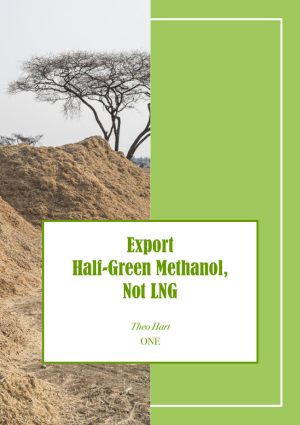 As this is being written, it is still the metric of total CO2 emissions due to human activity worldwide, which is thought important to keep track of. However, some say circa 80% of that estimated total is due to using fossil fuels, while an explainer by the CSIRO says 90%. They call themselves ‘Australia’s National Science Agency’. A bunch of scientists in various fields is what they are — credible people in short.
As this is being written, it is still the metric of total CO2 emissions due to human activity worldwide, which is thought important to keep track of. However, some say circa 80% of that estimated total is due to using fossil fuels, while an explainer by the CSIRO says 90%. They call themselves ‘Australia’s National Science Agency’. A bunch of scientists in various fields is what they are — credible people in short.
That paper is titled: ‘What are the sources of carbon dioxide in the atmosphere?’ Pretty clearly, when 80-90% of a total is due to the use of fossil fuels, then increases in their CO2 output will also be associated with rising levels of aerial CO2 over the last dozen decades. So, the metric of what to heed may be CO2 emissions only where the C is of fossil origin.
Why go through contortions to estimate what all other sources might be contributing? If the metric is switched to only CO2, where the C is of fossil origin, the policies for their reduction will differ from what net-zero adherents advocate. The goal will be to make fossil fuels much less used and replace them with huge amounts of different biofuels. It entails much extra growth of biomass, with photosynthesis removing more CO2 from the air.
Half-green methanol fits in very nicely here. Nearly all methanol today is made from natural gas, which is thus a fossil fuel. The methane (CH4) in the gas becomes methanol (CH3OH) by using steam and a catalyst, with H2 as a co-product. However, when the feed contains, besides methane and steam, both CO2 and H2, a balanced equation of two methanols is made: one methane, one CO2, and two H2.
When the CO2 is green in source, then half the C in the methanol would be green and half fossil in origin. At least in theory, but the chemistry is complex, and the resulting methanol could really only be half green when some biogas [green methane] is included.
Containership Fuel
Leaping ahead to a major use of half-green methanol abroad, it is key to obtaining a largely green fuel for use in container ships. Methanol itself is not energy-dense.
Yet, combined with a suitable ketone, it becomes so. US Patents 2827 494 and 95, issued decades ago to a major company, cover this. For example, propanone adds two methanols to form 2,2-dimethoxypropane with five C atoms, while methanol has only one. When the methanol is about half green, this product will be about 80% green. Propanone is readily made from weak acetic acid using suitable bacteria immobilised on a charcoal bed. The temperature employed may allow it to be collected as vapour, as it distils at 56° ordinarily. A weak acid solution is obtainable from a ferment of vegetation, often its cellulose content. With sugarcane, it could be the cane juice. It is relatively cheap to make propanone this way on an industrial scale.
Many decades ago, propanone was made on that scale by fermenting maise grain.
Not LNG because…
Liquifying natural gas requires high pressure and a very low temperature of minus 162°. The LNG is then stored in specialised containers that maintain the cold. The capital cost of the plant is very large, and operating it uses a great amount of power. Storage containers are costly, as are the special-purpose LNG ships. At the destination port, more specialised storage will be expensive to build. Therefore, the scale of any project must be large. It is no surprise that long-term supply agreements are necessary to justify all this investment. Yet, if much of the gas is meant for heating buildings, the volumes needed will vary with the weather. LNG is entirely a fossil fuel, so uncertainty about future regulations adds extra risk. Moreover, it is still pretty inflexible, as the number of destinations remains relatively few. LNG’s future is really not stable.
Converting natural gas into methanol and shipping it is surely far less risky. Ordinary storage tanks and tanker ships can be used; the scale of the plant to make it is smaller. Destinations are many, and there exist many uses for methanol. Moreover, as mentioned earlier, methanol may be half-green. Burning it in a gas turbine to produce electricity is better than using LNG in place of coal.
Hydrogen From a Ferment
Many people associate ‘green’ hydrogen with electrolysis. Yet, it also arises from some ferments, particularly those where butanoic acid is the main product. Here, for each glucose molecule consumed, two each of CO2 and H2 are produced along with the butanoic acid. A processor would acquire biomass in various forms from farmers to feed the ferment. Pretreatment of the biomass gets the ferment started sooner.
A preferred one uses a hot solution of acetic acid to remove some of its xylan while also creating more acetic acid from the acetyl side groups. This yields solids more readily fermented plus a more acidic solution. Biogas [green methane] is made from dilute acetic acid by bacteria, which split it into methane and CO2, both gases. The methane can be separated and added to the off-gases from the butanoic acid ferment, all then sent by a small bore pipeline to a methanol maker not overly distant. Should anyone else en route add in more biogas, so much the better. The hydrogen, plus part of the CO2, helps create methanol from natural gas which is nearly half green. Using some biogas with natural gas assures this. Butanoic acid may be extracted from the ferment and passed as vapour over a hot catalyst to form dipropyl ketone (PPK). PPK is barely soluble in water, more energy-dense than ethanol, and blends well with gasoline in greater proportion. So, it would soon displace ethanol as an octane booster.
Changing Engines
Hybrid road vehicles inherently use less fuel for the distance travelled, and they are more convenient and affordable than all-electrics. An EC engine [external combustion] should be in all hybrid road vehicles instead of gasoline engines to facilitate biofuel use. EC engines, like a house furnace, burn fuel in the open furnace, and have similar emissions. Once most road vehicles have EC engines, the air quality in urban areas will be much improved: better emissions and better health. The EC engine of choice should be a closed-cycle turbine with a condenser using a suitable working fluid.
About fifty years ago, the DuPont company tested dozens of such fluids and built a small EC engine to do so. It had an innovative rotating boiler. [See US Patent 3613 368, though that condenser should be very short with a separate cooling circuit and radiator.] Road vehicles are not the only place for EC engines. Think portable electricity generators. Much quieter with a small turbine as the engine. A larger genset (as these units are called) for remote communities would be most welcome, as today their diesel engines are annoyingly loud. Moreover, the fuel could be wood locally sourced instead of refined diesel fuel trucked in. No doubt, some will say not enough biofuels can be made to supplant all liquid fossil fuels. But that does not factor in large changes in crops produced.
One instance is the Canadian prairies, where large expanses growing wheat could instead be growing a type of sunflower called sunroot, which has many small flower heads and grows well over 2m tall. Much greater biomass per unit of area is also simpler to grow and harvest using less expensive equipment. The atmosphere hugs the whole planet, so we must think like that to combat global warming. Much arid land near a sea could be irrigated with seawater once its sodium is removed. This could then produce very large amounts of biomass, hence also biofuels. Emitting CO2 from burning them is a cycling event.
Theo Hart





